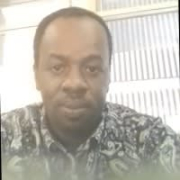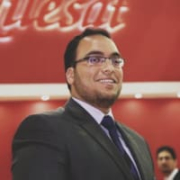

Nagios XI and Cisco UCS Manager compete in the network and infrastructure management category. While Nagios XI offers better customization and cost efficiency, Cisco UCS Manager excels in unified resource management and infrastructure integration.
Features: Nagios XI is an open-source tool allowing custom plugin development, offering flexibility tailored to monitoring needs. It has a strong supporting community and excellent scalability, positioning it well in IT markets. Cisco UCS Manager provides integrated management across Cisco data center systems, enabling comprehensive control over server, storage, and networking resources. It stands out in its flexible network configurations, crucial for streamlined infrastructure management.
Room for Improvement: Nagios XI requires additional plugins for extensive monitoring, lacks complex clustering support, and needs manual script configurations, increasing setup complexity. A unified interface and enhanced API support would simplify operations. Cisco UCS Manager could improve by simplifying its interface and enhancing integration flexibility. Streamlining firmware upgrades and offering an easier configuration process would benefit user experience, especially for smaller organizations.
Ease of Deployment and Customer Service: Nagios XI offers deployment in private, hybrid, and public clouds but requires considerable configuration. With a vast community and forums for support, time zone differences could affect direct technical support accessibility. Cisco UCS Manager is typically deployed on-premises, posing challenges for those without technical expertise. Its customer support is reliable, yet deployment complexity can burden smaller enterprises, with licensing and support costs being key considerations.
Pricing and ROI: Nagios XI is cost-effective with an open-source model that saves costs; its proprietary license is valued for its features, offering good ROI for detailed monitoring needs. Cisco UCS Manager, although more expensive due to hardware and licensing, offers robust reliability and integrated management justifying its cost for full-scale infrastructure solutions. Nagios XI attracts budget-conscious buyers, while Cisco UCS Manager appeals to those prioritizing system efficiency.
I can manage all LAN uplinks and fiber channel storage uplinks directly from UCS Manager.
Cisco UCS Manager provides cost savings by reducing the time support staff spend on long deployments.
With Intersight, service requests are automatically generated, enhancing the user experience and providing timely resolutions.
For a severity one case, a call ensures immediate assistance and resolution of the matter.
Regarding Cisco tech, they are pretty good.
Adding new chassis and extra blades is streamlined.
I would rate the scalability at nine out of ten, probably.
If the user interface isn’t presenting data well, it becomes difficult to manage when scaling.
If there's a really complex problem, I would probably give it a ten since it gets escalated quickly.
It is very stable.
We would benefit from advancements in AI that offer firmware recommendations automatically, reducing the need for human intervention and vendor communication.
It doesn't work straight out of the UCS, so someone who knows what they're doing is needed immediately, and it can be quite confusing.
While it has been improved from using Java to HTML, simplifying the tabs would enhance user experience.
Many tools have poor user interfaces, making them hard to manage and navigate.
The GUI could be improved. It's a bit too basic.
Recently, we acquired an excellent bundle with significant discounts, with offers like buying three servers and getting one free, along with UCSC and fabric included for free.
As long as they can afford it, there is a setup cost involved.
We are using the free, open-source version.
The pricing for the Nagios XI product is good and better than other solutions.
It supports ease of deployment, allowing for quick mass deployments in the data center, saving time and resources by doing so from a remote location.
Whenever there's a failure of any component, it's very easy to swap because you just disassociate that profile, remove the faulty blade, connect the new blade, and associate that profile, maintaining the same MAC address and worldwide port name.
One of the valuable features is the user interface base, specifically the C user interface.
Nagios XI simplifies our setup and reduces the time spent configuring monitoring tools.
The alerting system is very effective.


Nagios XI provides monitoring of all mission-critical infrastructure components, including applications, services, operating systems, network protocols, systems metrics, and network infrastructure. Third-party add-ons provide tools for monitoring virtually all in-house and external applications, services, and systems.
Nagios XI uses a powerful Core 4 monitoring engine that provides users with the highest levels of server monitoring performance. This high degree of performance enables nearly limitless scalability and monitoring powers.
With Nagios XI, stakeholders can check up on their infrastructure status using the role-based web interface. Sophisticated dashboards enable access to monitoring information and third-party data. Administrators can easily set up permissions so users can only access the infrastructure they are authorized to view.
Nagios XI Benefits and Features
Some of the benefits and top features of using Nagios XI include:
Reviews from Real Users
Nagios XI stands out among its competitors for a number of reasons. Several major ones are its integration options and monitoring abilities, as well as its alerting features.
David P., a senior DevOps engineer at EML Payments Ltd, writes, “We use Nagios as a network discovery tool. We use Nagios to maintain our uptime statistics and to monitor our services. It has allowed us to be much more sophisticated in our monitoring and alerting.”
An IT-OSS manager at a comms service provider notes, “Nagios XI has a custom API feature, and we can expose custom APIs for our integration. This is a great feature.”
We monitor all IT Infrastructure Monitoring reviews to prevent fraudulent reviews and keep review quality high. We do not post reviews by company employees or direct competitors. We validate each review for authenticity via cross-reference with LinkedIn, and personal follow-up with the reviewer when necessary.